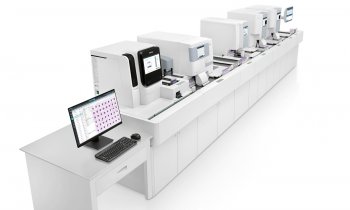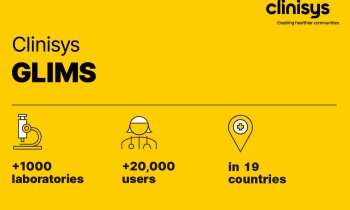Medical and financial assessment of new technologies in hospitals
Frederik L Giesel MD MBA about the importance of process management and efficiency in hospitals.

Frederik L Giesel MD MBA, is a senior resident in radiology at the German Cancer Research Centre, Heidelberg, Germany, and recently a visiting lecturer at the University of Sheffield.
His research focus is on pharmacokinetic and molecular imaging. He holds several patents for contrast media, undertakes various clinical trials, and has broad expertise in industrial cooperation. He has considerable international experience, which includes medical studies in Germany, Canada, the USA and the UK, and he recently finished a course in international healthcare management in the executive MBA programme at HfB (Business School of Finance & Management) in cooperation with NCH (Nations Health Career School of management). His MBA thesis focused on medical and financial assessment of new technologies in hospitals. The results of this work - of which he presents a short summary* – will be presented at the Dubai Hospital Congress in 2007 (IMDIHF Dubai 2007).
Through the executive MBA programme, Dr Giesel widened his expertise to include management and financial assessment. He is already involved in cost analysis and pricing for ultrasound diagnostic procedures, for the German Association of Ultrasound (DEGUM) and is also developing a business plan for a private MRI unit.
Summary
Healthcare and the increased demands on technology raise the question of the investment and running costs associated with a particular technological device and whether new technology might improve processes and work efficiency (cost per unit). Today, the focus is not only on quality and diagnostic or therapeutic improvement to the patients. There are also important financial aspects involved, and one of the main issues is process management and efficiency.
This work examined the crucial issue of workflow in drug purchasing and delivery in a hospital environment, which is still causing drug distribution errors and therefore critical drug adverse events (~4–5%). Many weak sub-processes were identified through a comparison with an automated process. The latter can make certain sub-processes redundant, such as revaluation of the picking list or decentralized stockage, which holds a lot of unutilised value (~0.5–1 million euros, 600-bedhospital).
The investigation began by taking a closer look into the workflow of medical drug delivery in hospitals, focusing on characterization (responsibility and time) in the process commonly used in hospitals and comparing these characteristics with the utilization of an automated drug dispenser system. In an evaluation of the process from drug prescription to administration, 11 steps could be identified. By using the ADD system, five out of 11 steps could be eliminated (via drug storage centralization and an IT prescription system). The total process time was estimated to be 29.1 hours for the conventional approach, whereas, using ADD, only 19.1 hours were estimated, which means the total process time by human resources could be reduced by about 34%. After the process characterization by time, value and cost was elaborated, the total investment and amortization rate were investigated for an automated drug dispenser system. For a 600–bed hospital the total investment cost was estimated to be around 1.0 million euros, and the break- even after a 100% roll out was estimated after the third year.
This investigation indicates that an ADD system improves not only the process quality in the hospital using newest technology (unit dose and bar coding) and therefore reduces human errors in drug distribution. In addition, with this new technology, costs (reducing time and human resources) can be saved and break-even is reached after just three years of initial investment.
* Giesel FL (German Cancer Research Centre, Heidelberg, and the HfB-Business School of Finance & Management, Frankfurt), Rius M (German Cancer Research Centre, Heidelberg), Sibbel R (HfB-Business School of Finance & Management, Frankfurt, Germany); Grosch S (Swisslog, Switzerland); Stroud M (BMI Health Care, London, UK), Kauczor HU (German Cancer Research Centre, Heidelberg), Wocher J (Kameda Medical Centre, Kameda, Japan) and Breitenbach F (EDAG Engineering + Design AG, Business Unit Clinic, Fulda, Germany)
14.11.2006










